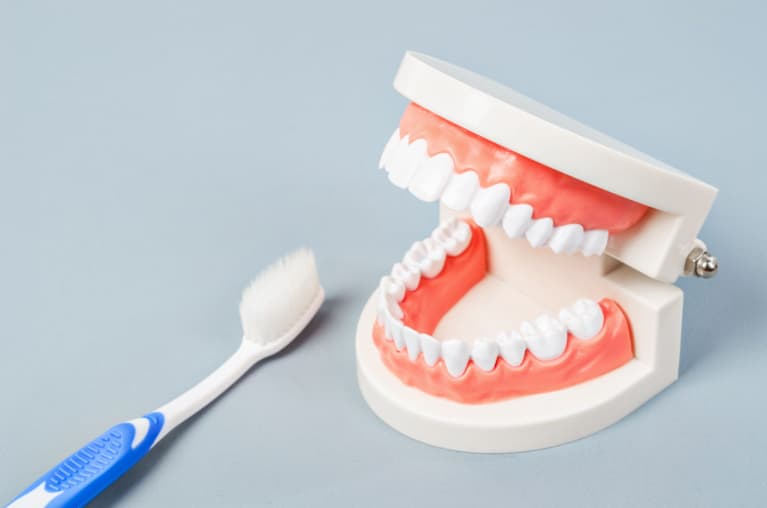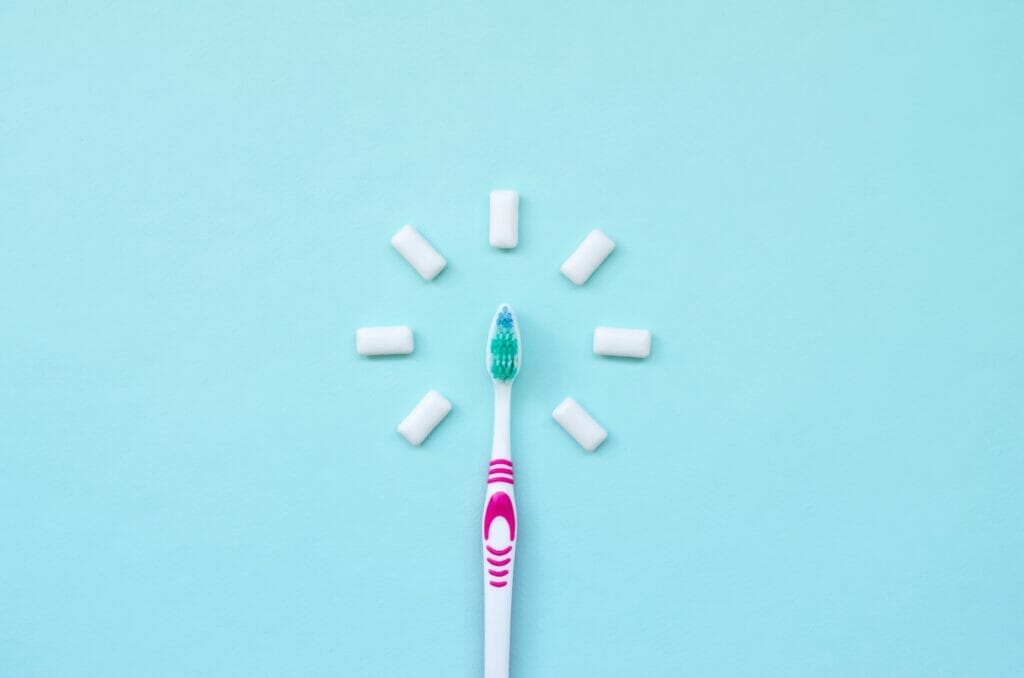
Hi! My name is Kyle Hornby and I'm a Dentist in Kitchener, Ontario. A few times each week, I sit down at my laptop to write blog articles that help my patients to "up" their oral health game. Today, I'd like to answer a common patient question: "What's the best way to brush your teeth?".
Brushing your teeth daily is the foundation of any oral health routine. When you brush your teeth, you are removing plaque and food debris from your teeth and gums so they can rebound, heal and regenerate.
There are, however, really efficient ways to brush your teeth and not so efficient ways to brush your teeth. There are also commonly-used techniques that leave lots of plaque on teeth and can even harm your gums.
So, what's the best way to brush your teeth and how is that technique superior to others?

Many people brush their teeth with an almost exclusively, horizontal, back-and-forth motion. If you use this technique and scrub hard enough (and I don't recommend that), your teeth will feel somewhat shiny and clean after about 1-2 minutes.
So, what's wrong with that?
Well, there are a few shortcomings of that very common approach. First, doing this can cause gum recession and actually wears divots or "streaks" into your tooth enamel over time. Second, brushing back-and-forth vertically won't allow your brush bristles to reach the contours in between your teeth.
You need more vertical motion in your toothbrushing so the brush bristles can sweep into the contact area between teeth. You still need some horizontal motion too, though, as it helps to get heavy, fuzzy-feeling, plaque deposits off the gum line.
So, a combination of those 2 motions gives you a circular technique at the gum line and a downward motion from there.
I recommend 4-5 light pressure, circular motions around the gum line and then a vertical sweep down between teeth.
This is a great way to brush your teeth!

When you brush your teeth with the Circular-Vertical technique, you clean deeper in between teeth and you also deliver the good stuff in your toothpaste (fluoride or hydroxyapatite) to more of your enamel. Fluoride or hydroxyapatite help to make your teeth resistant to decay. But those helpers can't get everywhere on your teeth without the proper brushing technique!
The Circular-Vertical approach is also much kinder to your gums and less likely to cause gum recession.
Lastly, this approach allows your brush bristles to get under your gums into the "sulcus" or gum pocket where plaque can hide. And, it removes much more plaque buildup from the gum line.
To sum things up, we all know that brushing our teeth daily is important. Ideally, you want to make sure you're brushing twice daily for 2-3 minutes and one of those sessions should be the last thing you do before going to sleep. But, simply brushing twice daily might not be enough especially if you're using an ineffective technique.
(Don't forget to floss 1-2 times each day as well!)
The key to effective brushing is maximizing access to as much of your tooth's surface as possible. Brushing in a circular motion will get heavy plaque buildup off of your gums. Adding some vertical (up-down) motion to sweep in between teeth is of great benefit too! If you're brushing side-to-side, back-and-forth, you'll miss hard to reach areas and harm your gums and teeth in the long run.
Thanks for reading today's article. Next week, I'll tackle more great oral health topics so please check in!
By Dr. Kyle Hornby, Kitchener Dentist
Our Dentist Office is located in Downtown Kitchener. We are a short drive away for families in Waterloo, Breslau & St. Jacobs. Our central location means we truly offer family dentistry near you!
This article is not intended to be a substitute for professional advice, diagnosis, or treatment. Accordingly, always seek the advice of your Dentist or other healthcare providers regarding a dental condition or treatment.
Services
Routine Dentistry & Tooth Repair
Oral Surgery & Tooth Removal
Prosthetic Dentistry & Tooth Replacement
Protective/Preventive Services
Teeth Whitening
Schedule an Appointment Now
